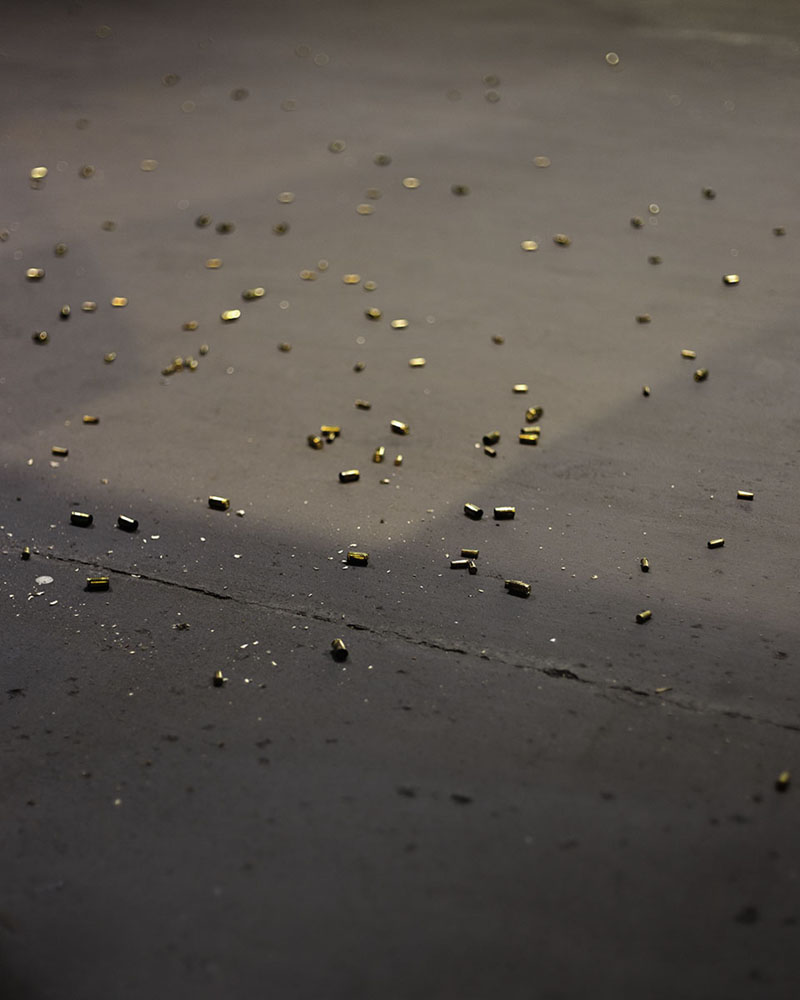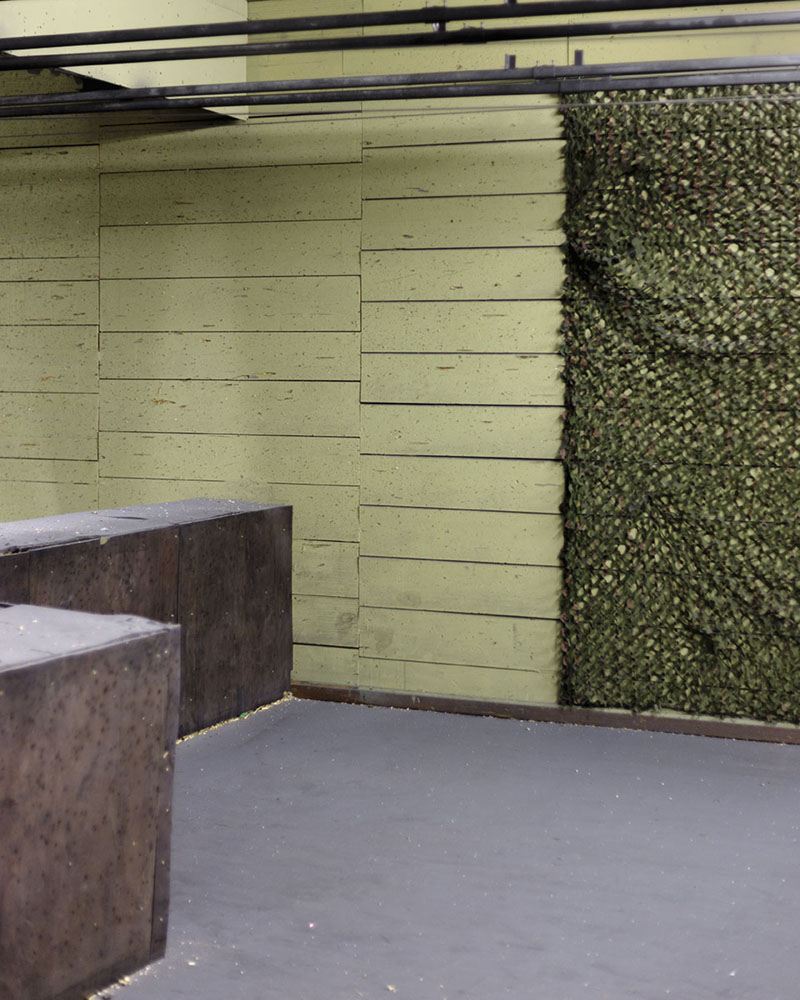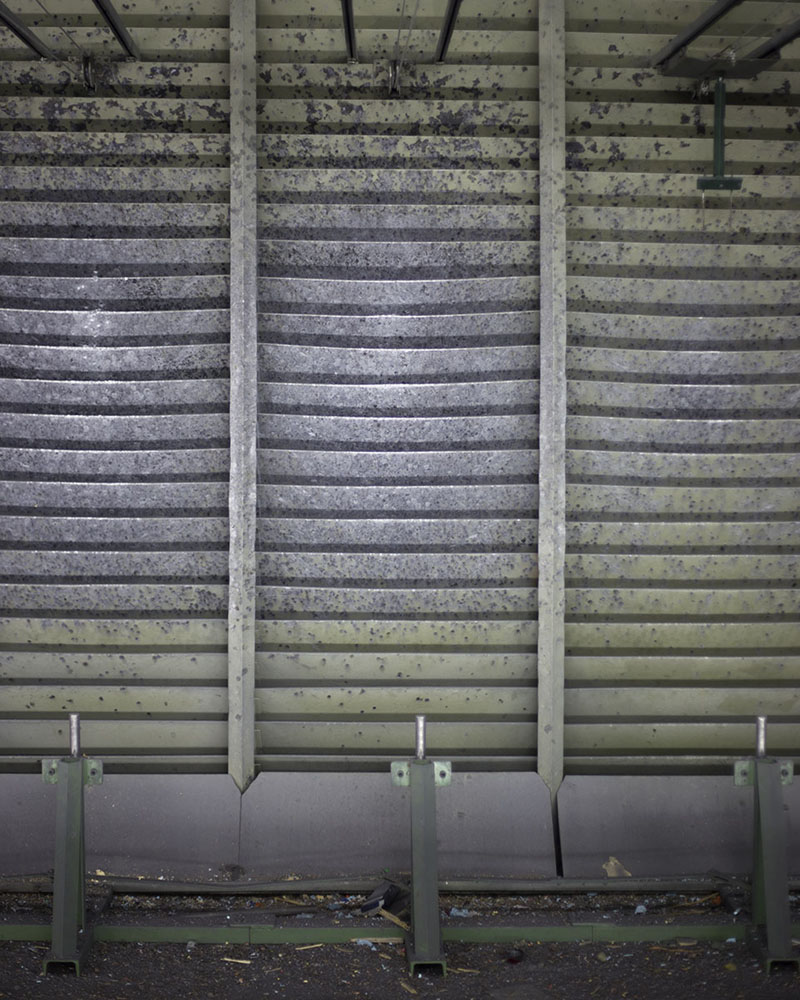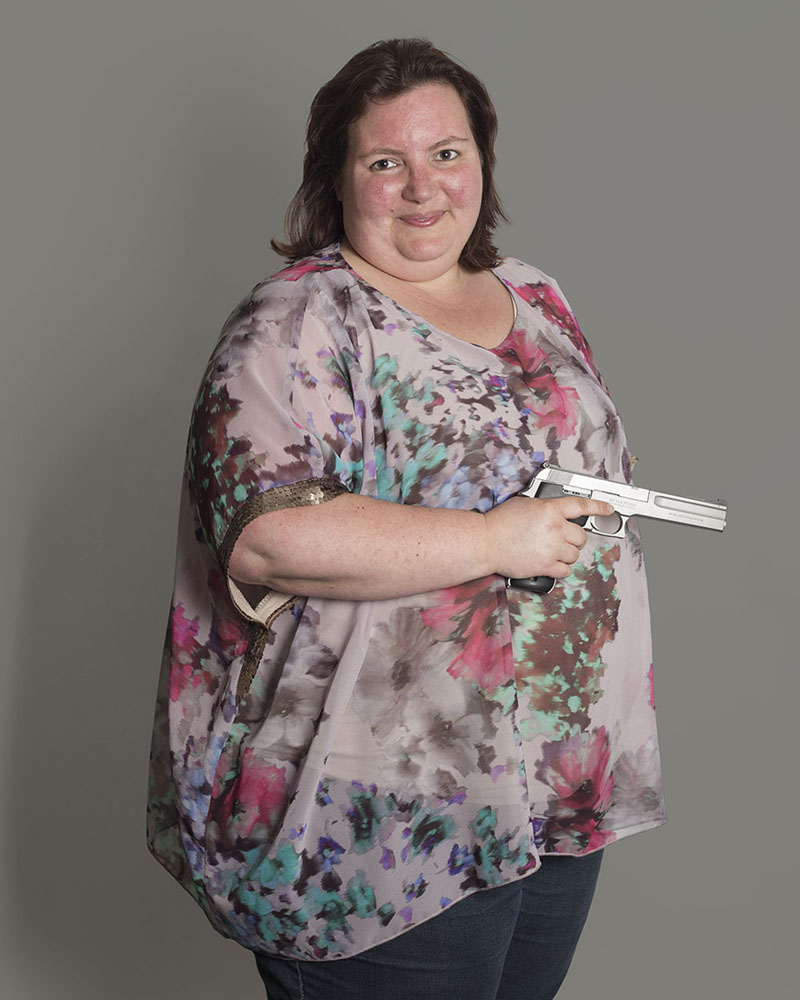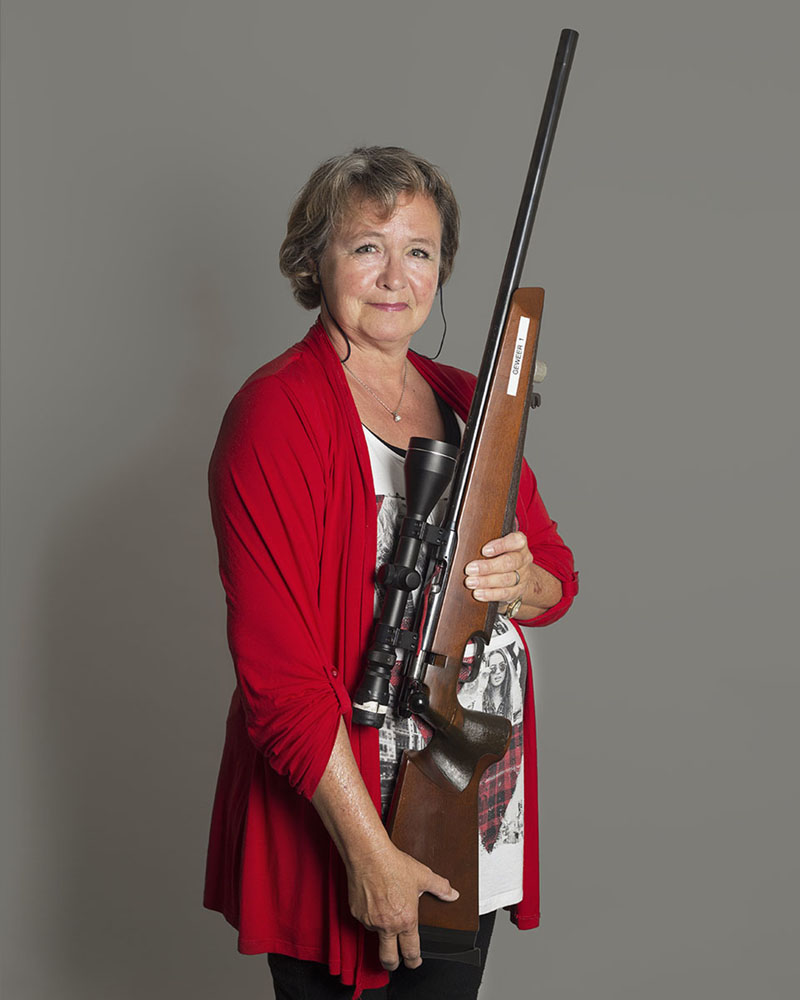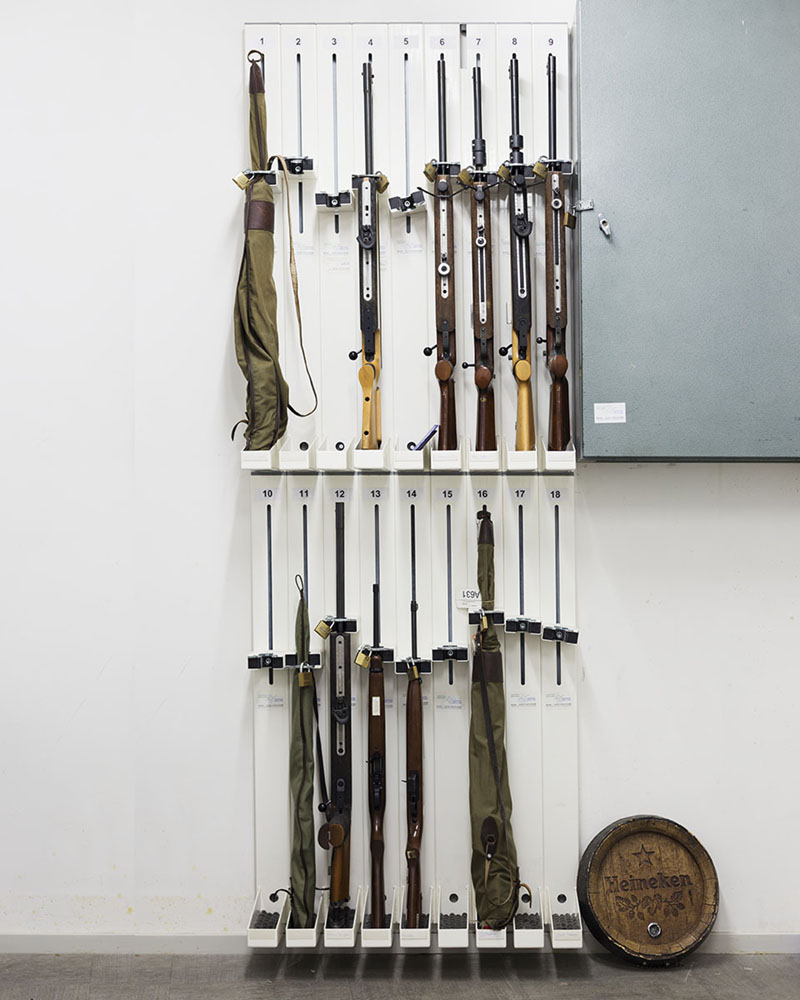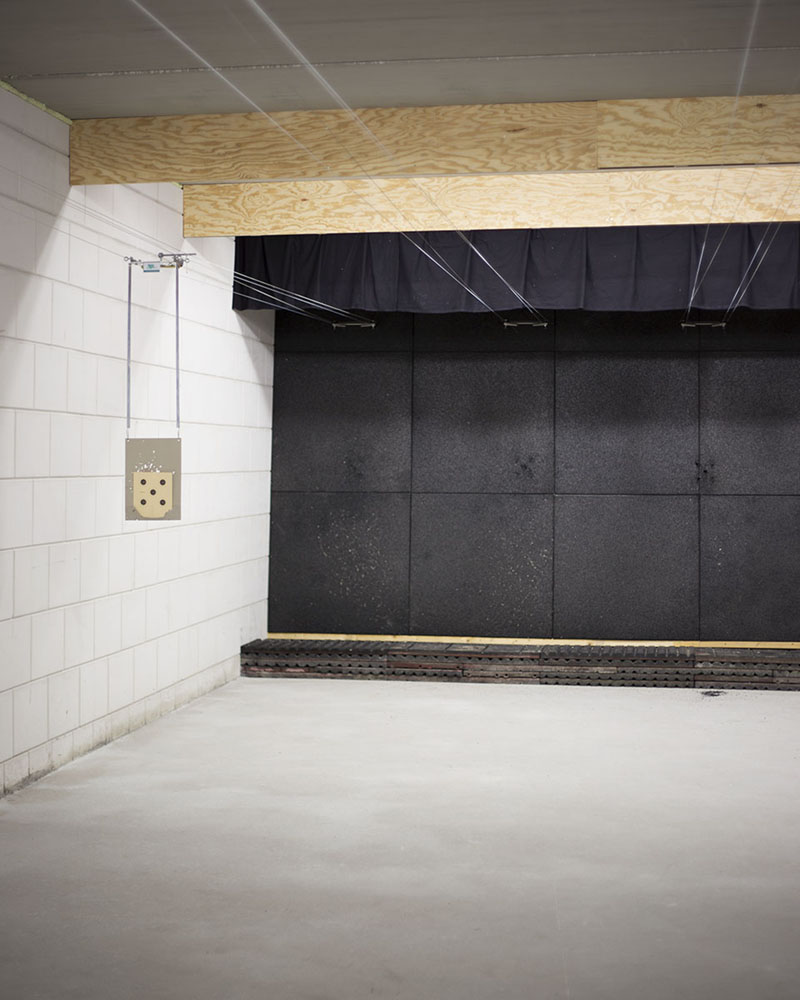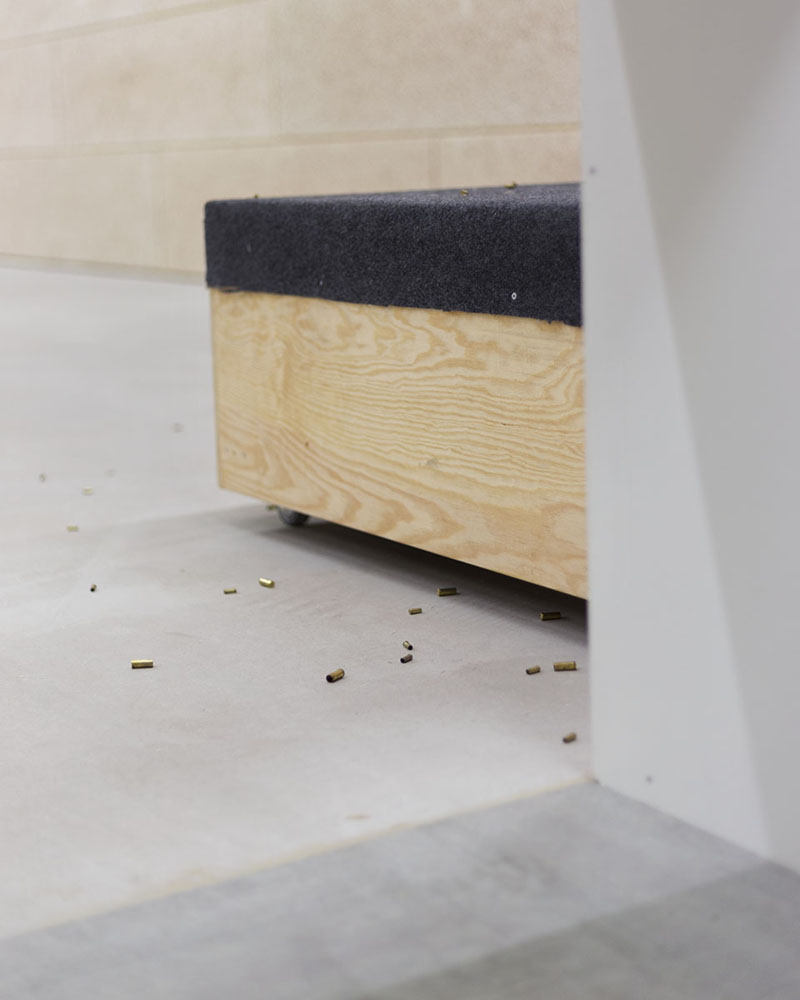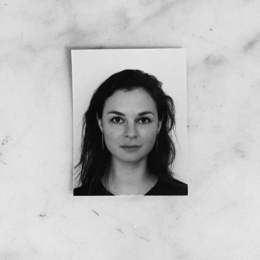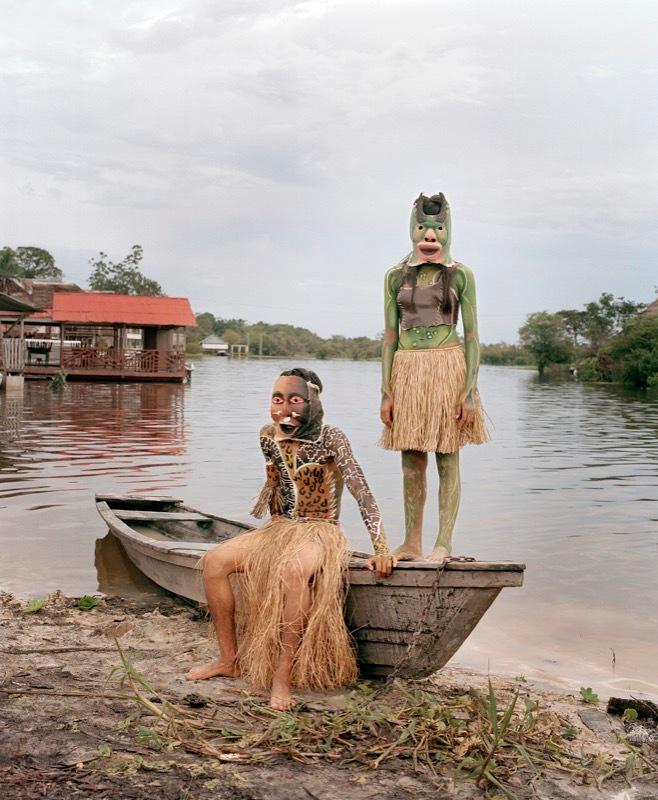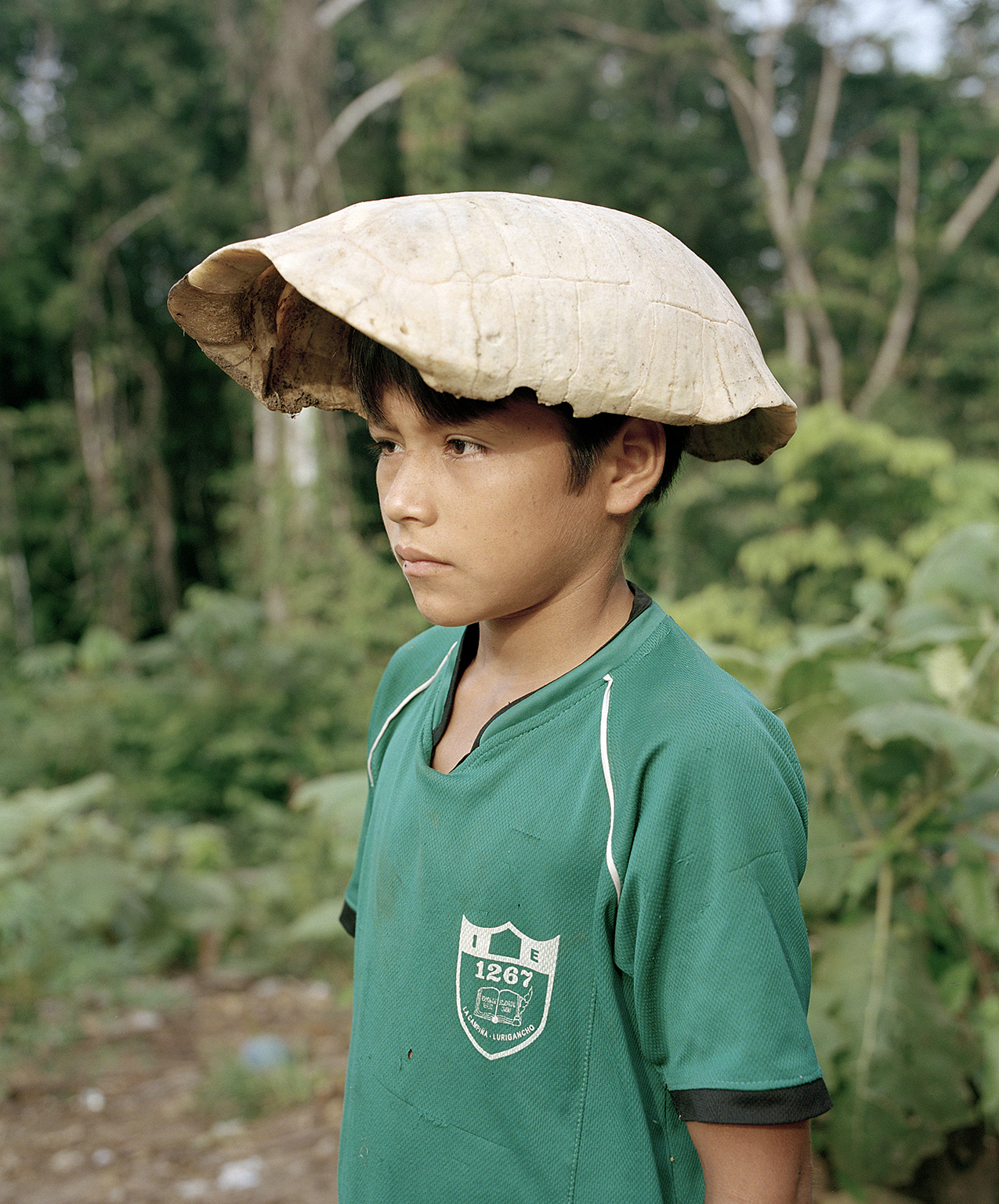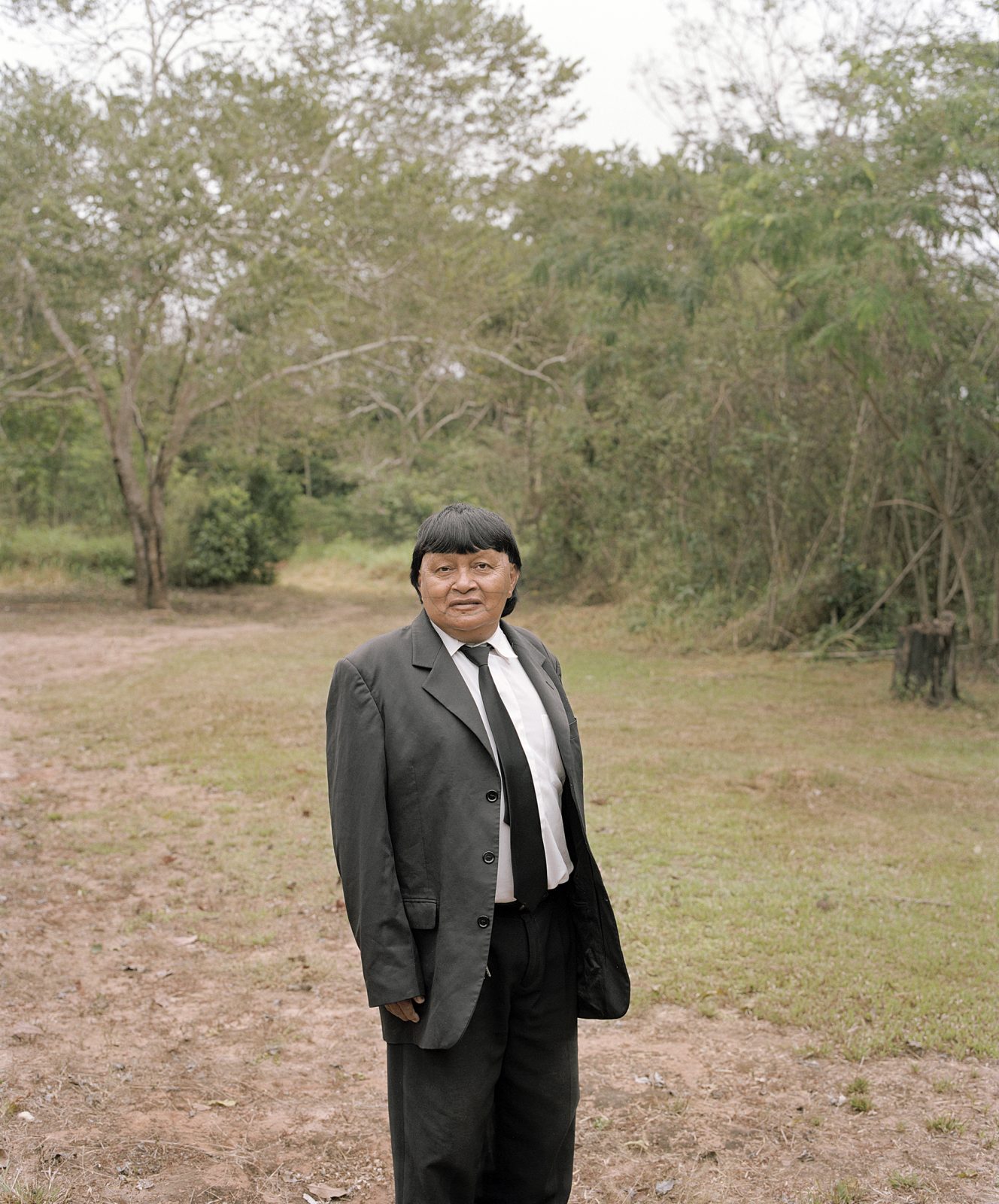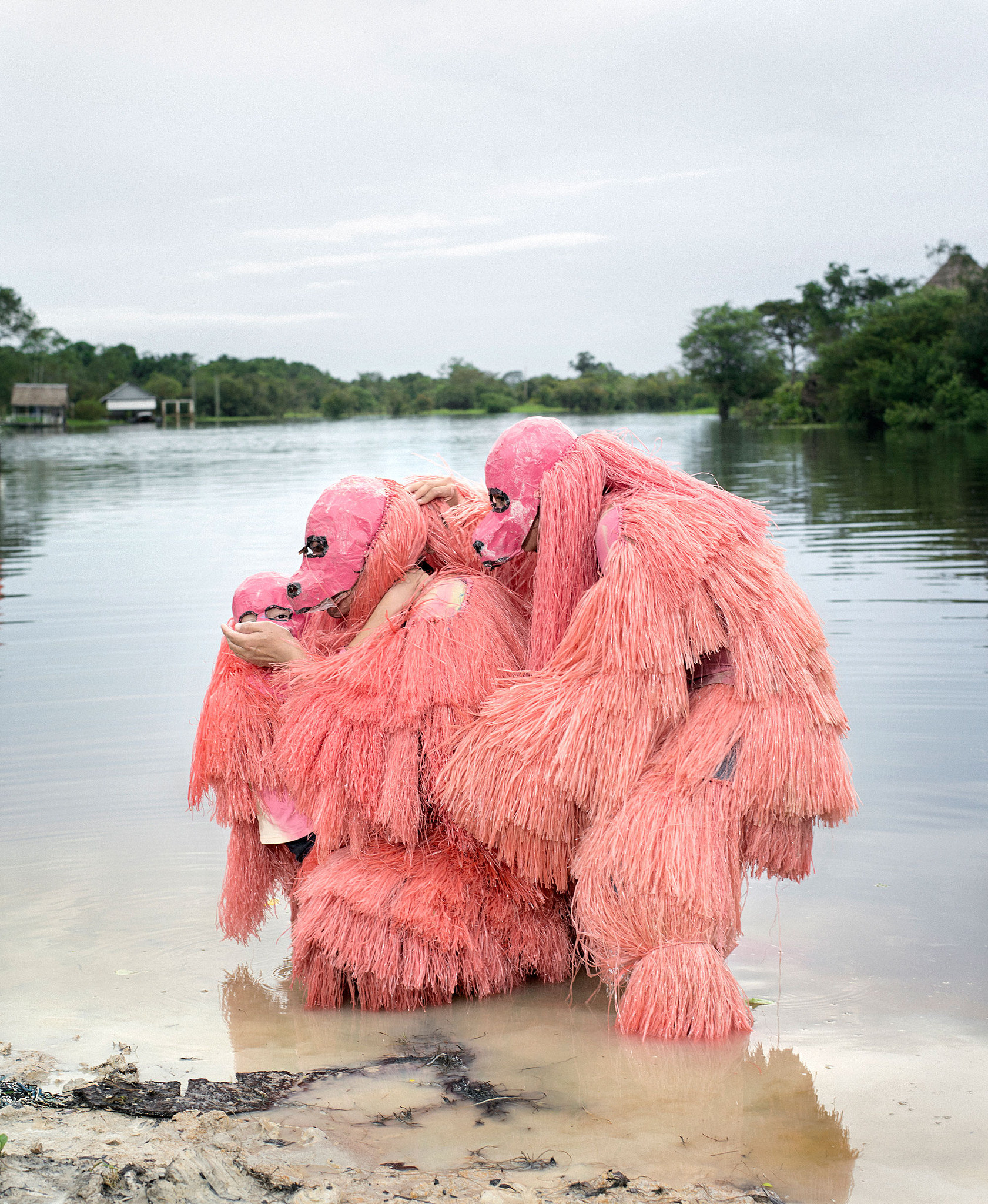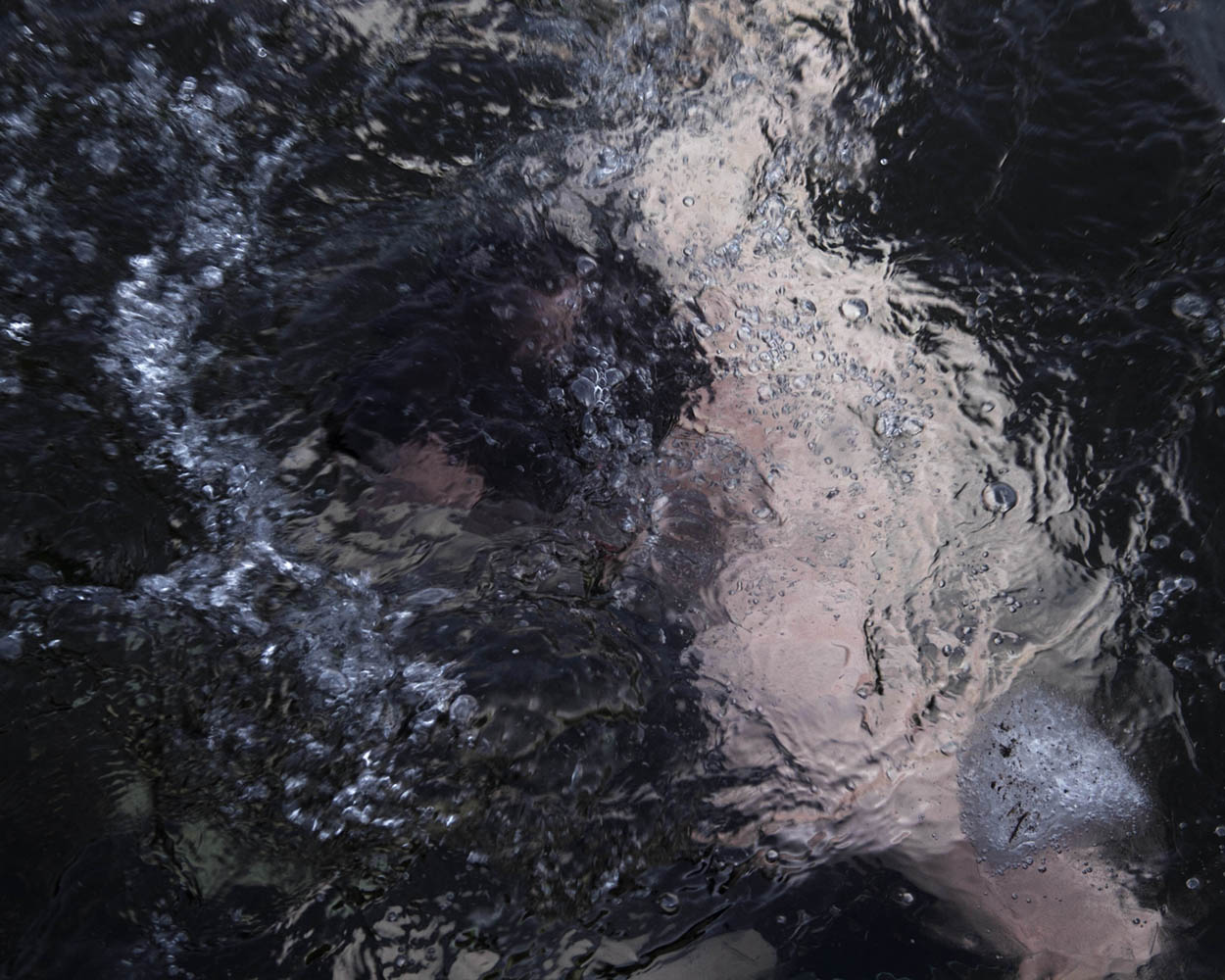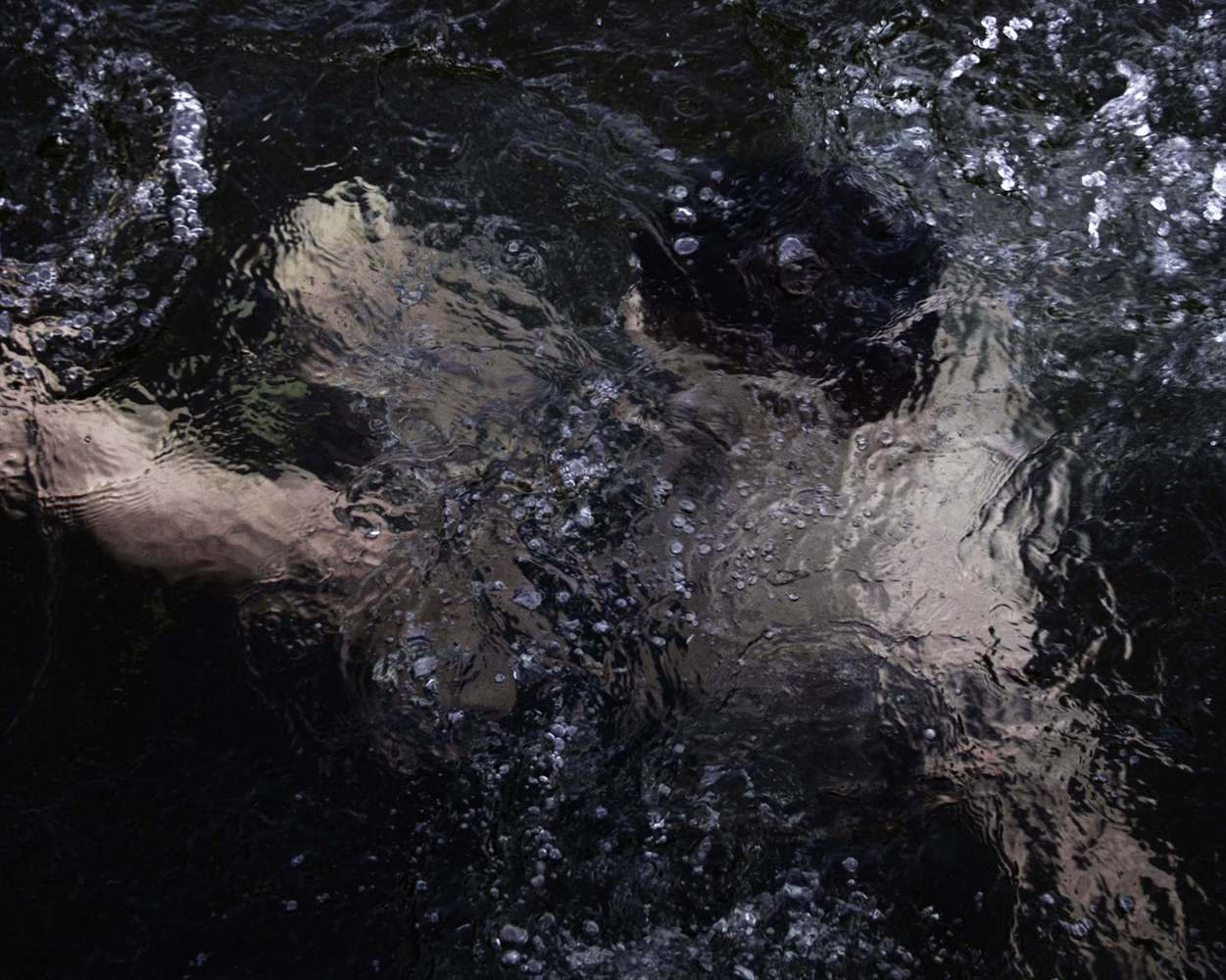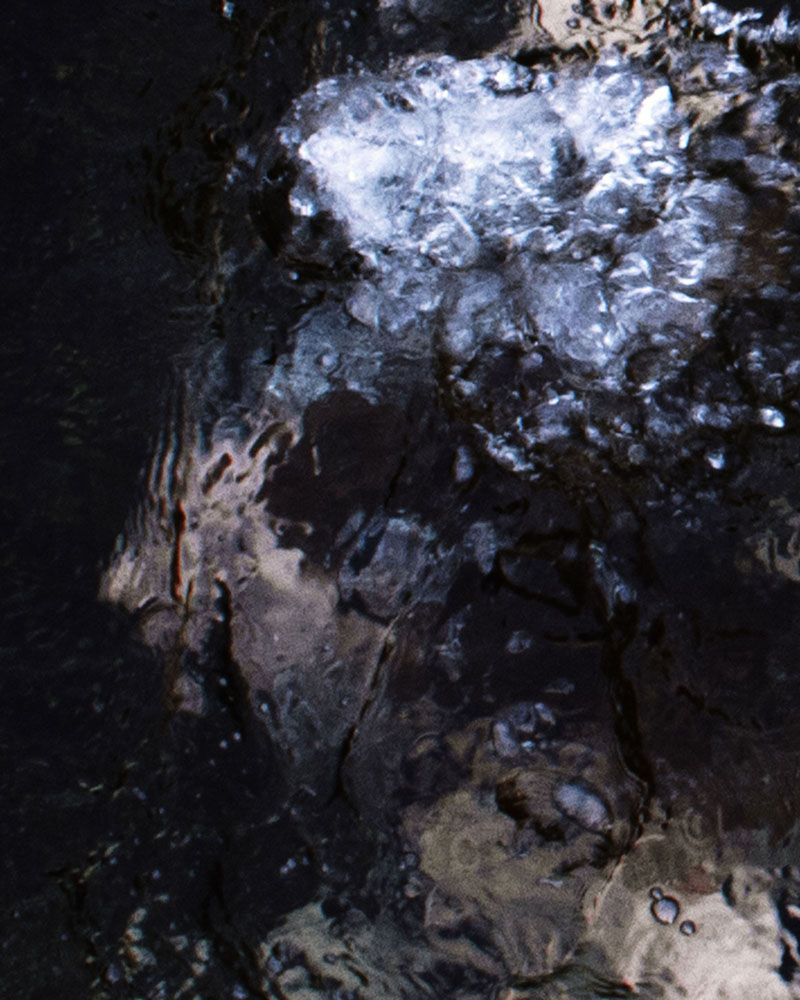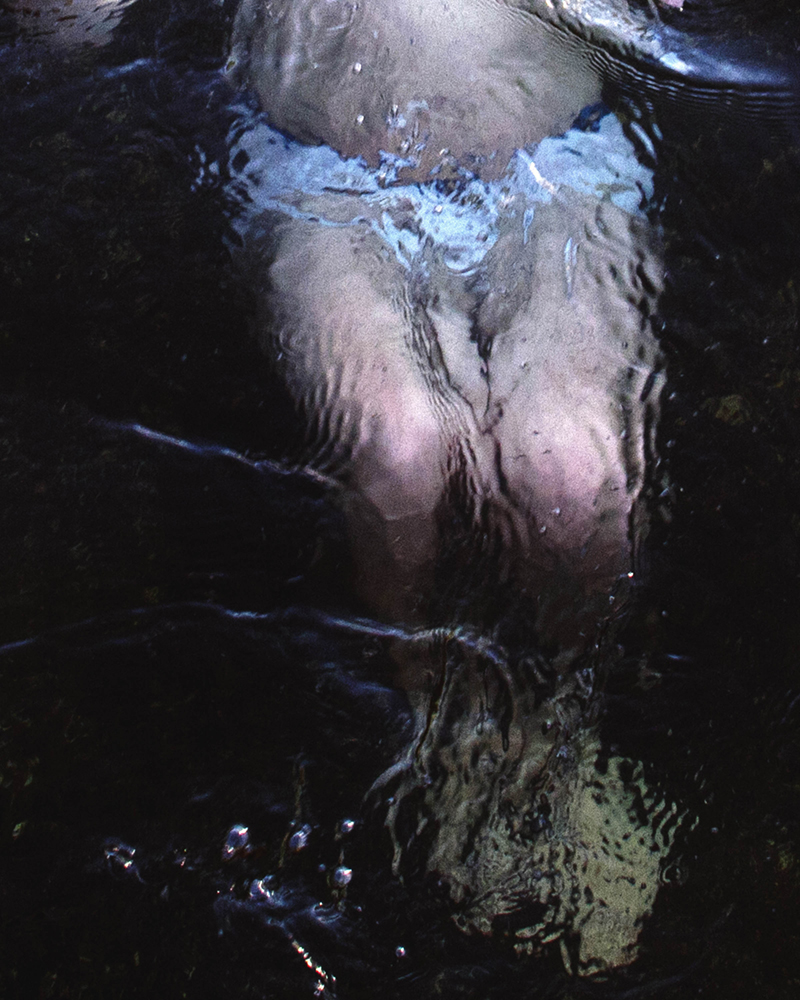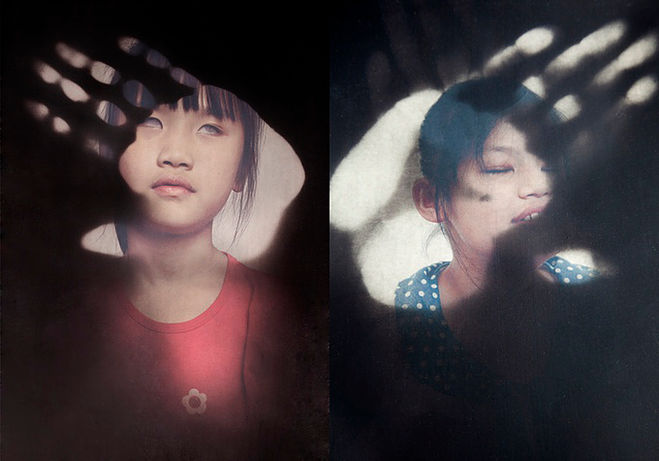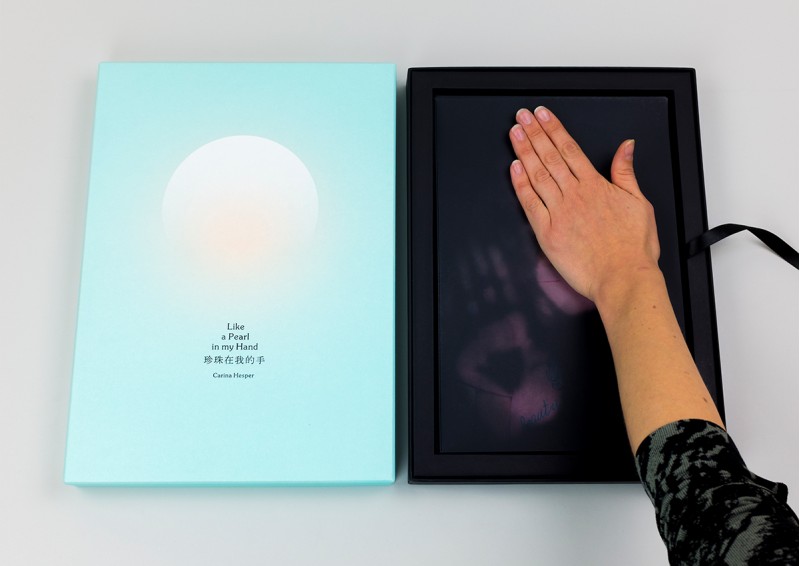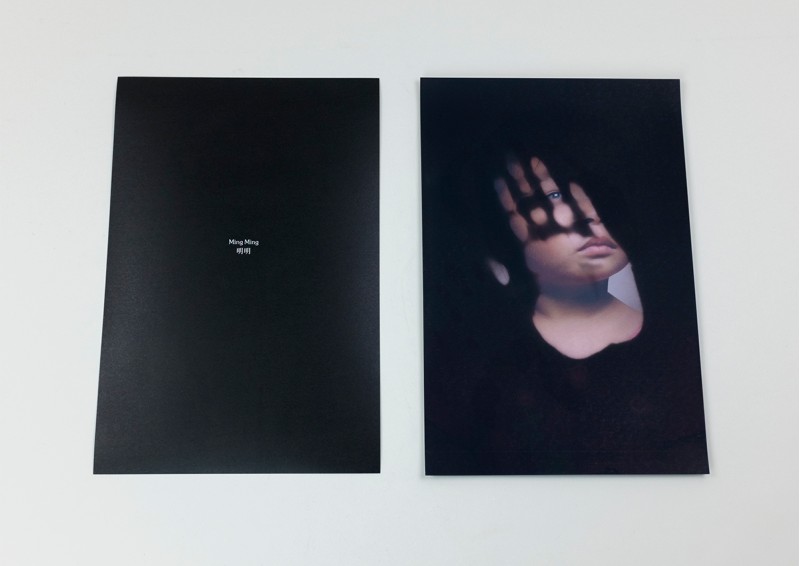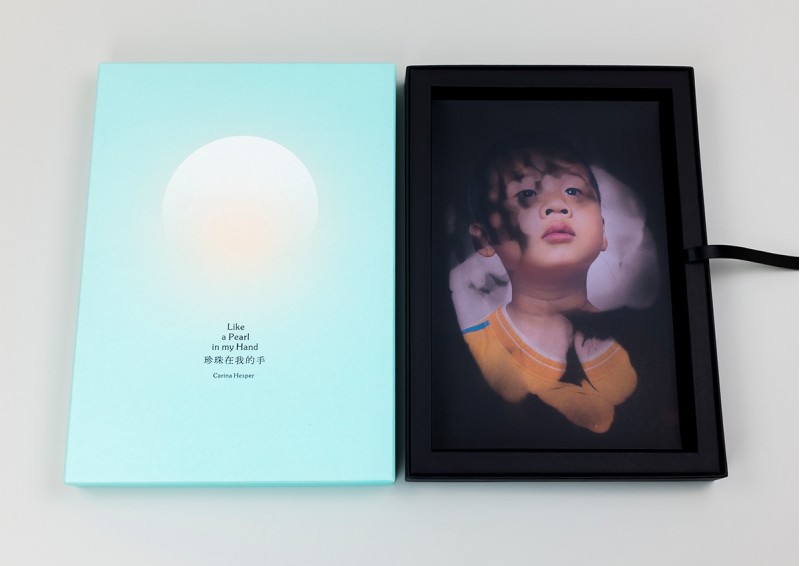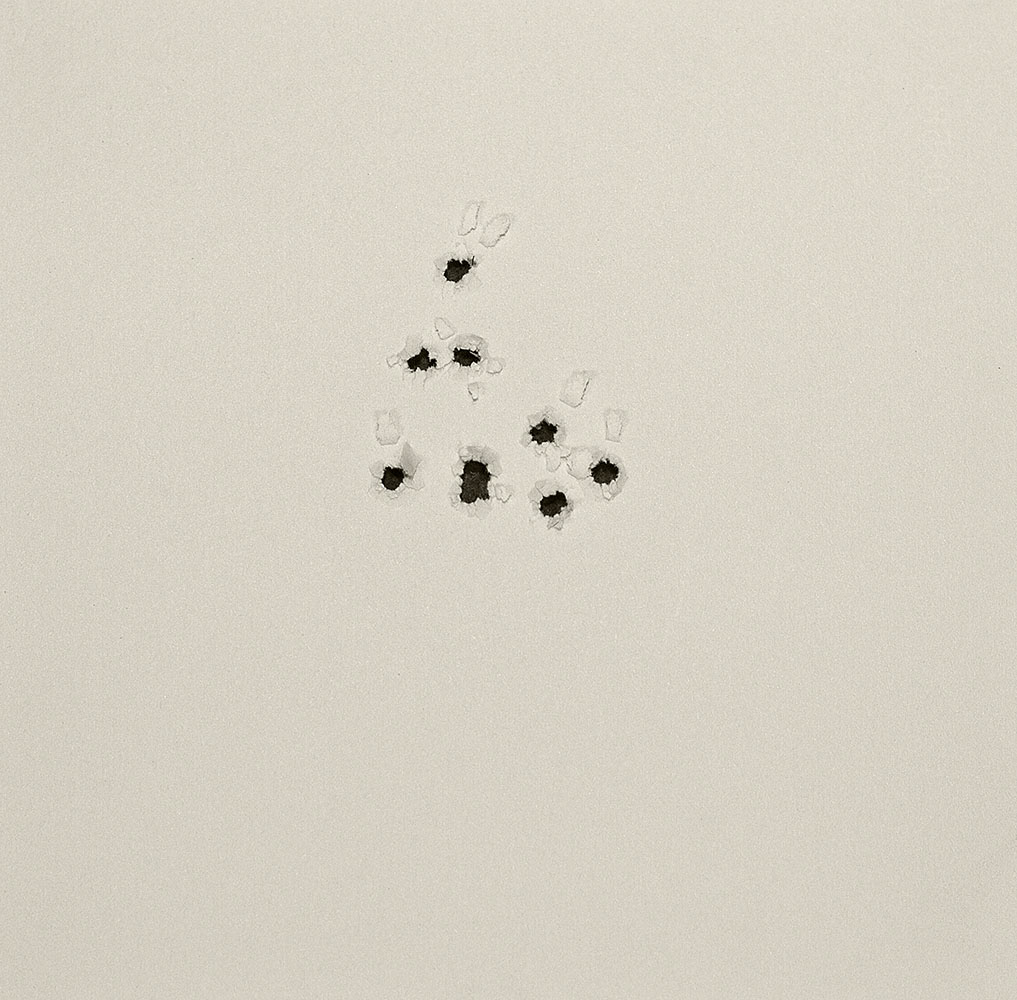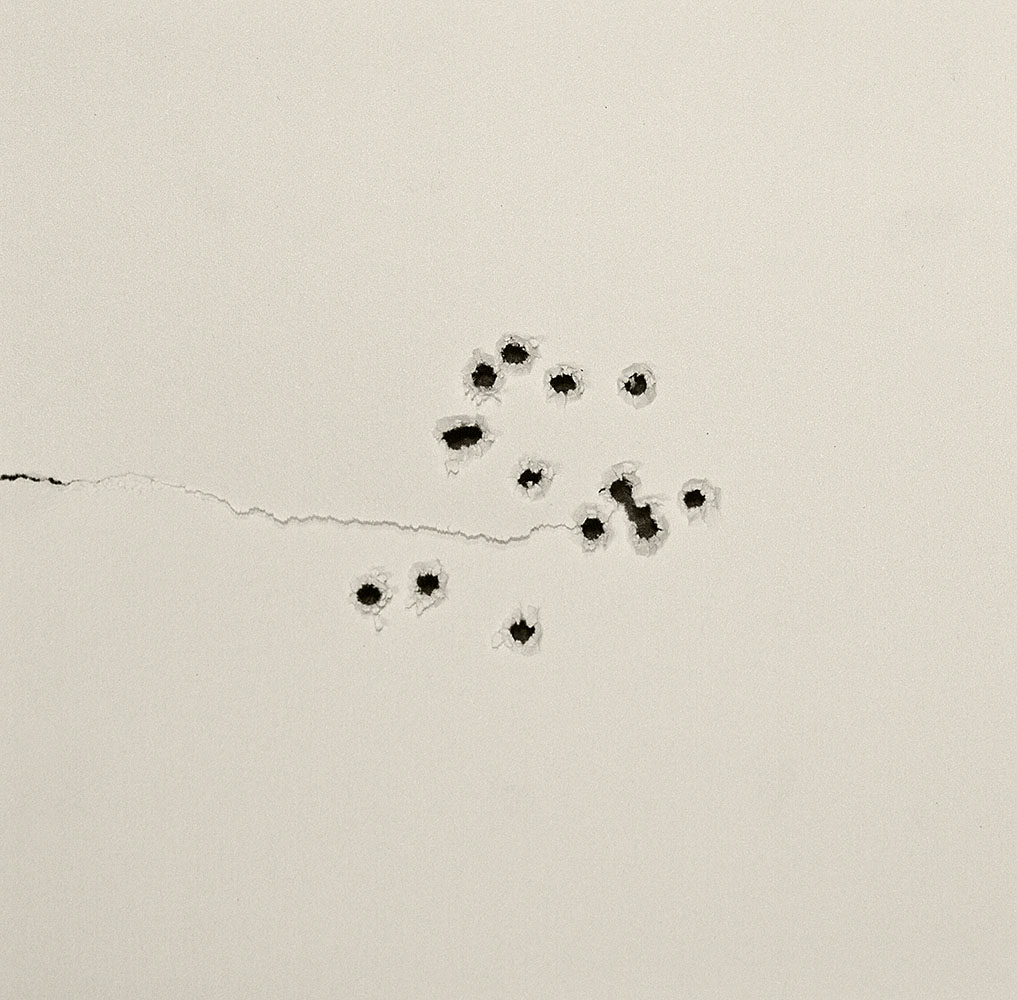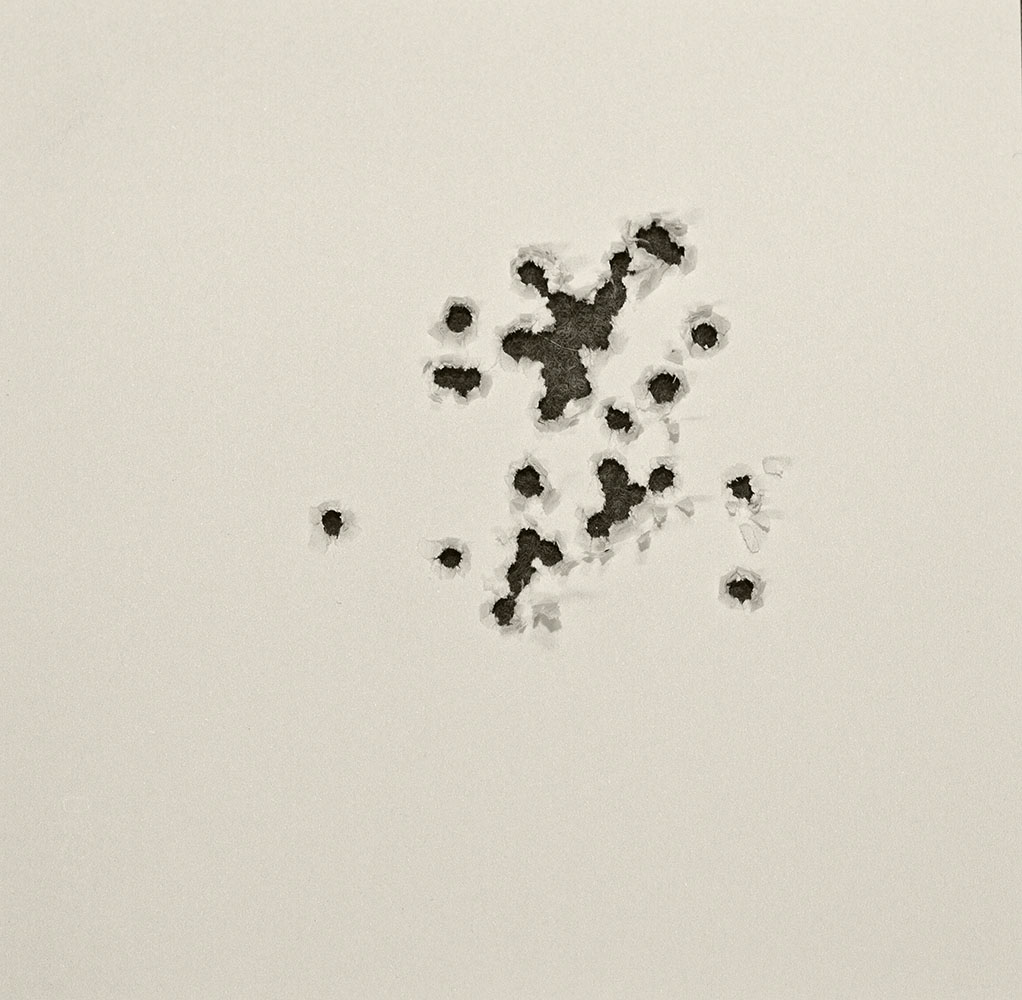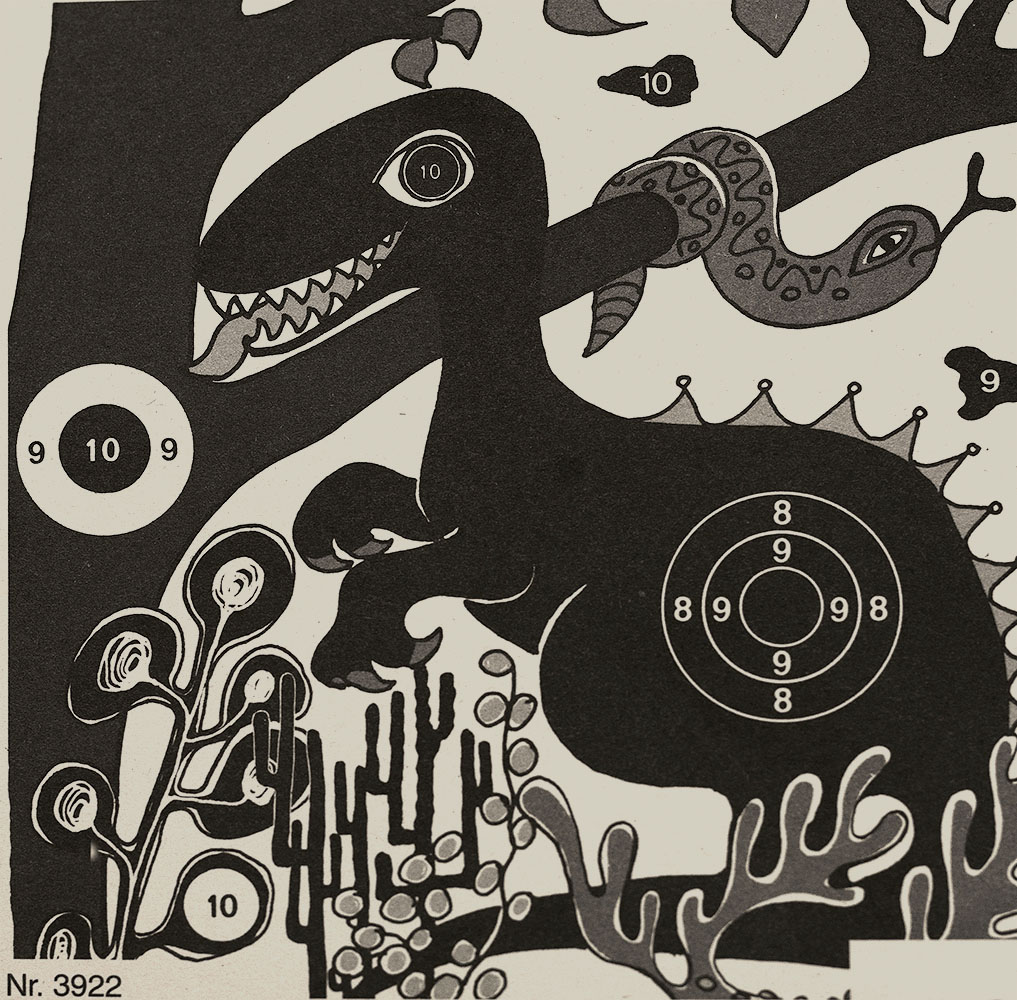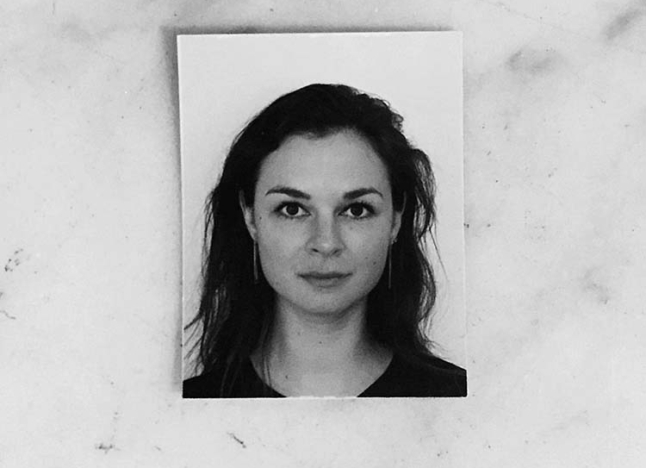Ignasi Casas & John Gribben
Artist Feature
Every week an artist is featured whose single image was published by Der Greif. The Feature shows the image in the original context of the series.
Robin Butter - It takes my mind off things
Feb 01, 2017
‘It takes my mind off things’ is a wonderment at and interrogation of the shooting culture in the Netherlands. In this provocative piece, Robin Butter poses the question; has the Netherlands always been a ‘secretive’ gun-nation? Secretive in that it has a long-standing fixation with firearms that is systematically hidden and denied. From the political-economic sphere of transnational interactions – the Netherlands place in the top five for creating firearm components in Europe – to the socio-cultural realm of the individual – the joy many Dutchman find when firing at shooting ranges, a tradition that has existed for over hundreds of years. Think of the famous Dutch painting of the ‘Nightwatch’ by Rembrandt van Rijn probably one of the oldest paintings of a shooters range, in that time called a marksman guild being portrayed. Without realizing firearms are deeply rooted in the soil of the Dutch cultivation. Members of Royal Dutch family have always served as the patron saint, until the death of Prince Bernard in 2004. This made the sport an elitist phenomenon. There are in the Netherlands a legion of shooting clubs, some of which are existing for over a hundred years, where weekly Dutch men and woman empty with full gratification their magazines. With over eight hundred shooting ranges in the Netherlands with an average of hundred fifty members, this is a large group within the Dutch society.
In 2011 a horrible shooting incident took place in the Netherlands, in Alphen a/d Rijn. The young Tristan van der Vlis shot several people in a shopping mall, before taking his own life. The shooter was a member of a range, with a registered weapon licence, which allowed him to keep his weapon at home in spite of his psychotic and suicidal tendencies. In the wake of the incident, not only the government but everybody wondered how this was allowed to happen. With just a few shots, Tristan van der Vlis cast a dark shadow over the Dutch shooting culture. The pressure on the clubs is present; the rules have been examined and adjusted. Now the clubs have been given a huge responsibility by the government. Responsibility for their members.
But what does this responsibility mean? Do we really have to worry? Or is it a matter of stigmatization, where we distrust every gun enthusiast? Even though only three percent of the shooting incidents in the Netherlands happen with a registered weapon? It leaves the overarching question; how can you even decide who is dangerous and who is not?
Artist Blog
The blog of Der Greif is written entirely by the artists who have been invited to doing an Artist-Feature. Every week, we have a different author.
Published in:
»Der Greif #9«
Yann Gross – The Jungle Book
Feb 06, 2017 - Robin Butter
People play an important part in my work. It’s not a necessity that they are in it. But they are 99% the starting point of my projects. Little encounters, stories that I hear or are have been told tend to catch my attention. This starts my curiosity to investigate. Stories that are far away from my every day life, that seem stranger than fiction.
In a way I use photography to escape my own mundane and pre-designed life. Where I don’t have to think about paying the rent or forgetting to buy cat food. Maybe it has to do with the second thing I truly love; literature.
Reading stories by Tom Wolfe or Jack Kerouac, Truman Capote and so on, who were part of the ‘New Journalism’. A style of news writing journalism which was developed in the 1960’s – 70’s. The literary style is characterized by a subjective perspective and emphasizes ‘truth’ over ‘facts’. In contrast to my book hero’s I tend to keep myself invisible, but I do immerse myself within the stories and build up a bond with my subjects. It’s personal nature and the significance of involvement. Not that I don’t believe in objective accuracy, but I think the influence of feelings is hard to ignore. Especially working together with people on long-term projects.
This is my escapism, and maybe the fil rouge of my work is opening a dialogue with people who in a way are escaping their daily routine also.
And gazing at the titles I have at home, this is what also attracts me to certain photo books. Those that blur the borders between documentary and conceptual practices and who are stepping outside of the traditional photojournalistic gaze.
For this blog post I choose to show the work of Yann Gross with The Jungle Book. My favorite discovery from last years Les Recontres d’Arles. After winning the 2015 Dummy Book Award Arles, Gross was granted the production of his book. My first encounter with the project was the exhibition created at the festival dubbed in the title the ‘Jungle Show’. Looking back at my Instagram post from July 6th last year I wrote down “Beautiful constructed exhibition /installation of Yann Gross with the Jungle Show. These blocks are only a small part of the space which guides you on the trip Yann took along the Amazon river. Exiting the work through the Jungle to end up again in the concrete jungle of reality.”
I called it an installation since the exhibition was presented with prints in light boxes of huge wooden boxes that reminded me of the boxes they used to use on ships. Carrying exotic treasures from far away, that only Rudyard Kipling could describe.
This goes hand in hand with the design of the publication of the project ‘The Jungle Book’. A green linen cover with golden letters imprinted, the side of the paper printed in gold. This reminding me of Kipling’s own classic Jungle Book, the appearance is striking; the cover using big fonts as seen in the classic children’s book. This project shows the life of a contemporary Amazonian. Gross’s Jungle Book takes you up the river following the footsteps of expeditions from the past.
Below zero makes the heart accelerate
Feb 04, 2017 - Robin Butter
Below zero makes my heart accelerate was created during my time in Copenhagen, when I interned with Trine Søndergaard and Nicolai Howalt. For weeks during the winter I examined the reaction of the winter white bodies in the icy harbor. Jumping in to the cold water in the early mornings, I found it beautiful how the bodies reacted to the water, disappearing for moments under water. Turning their bodies red from the adrenaline. People have been winter swimming for decades. There are enough photographs showing this, to me it felt boring to do the same thing. But still I needed to photograph these swimmers, not as an documentation, but trying to find what they are experiencing.
Now that I am busy with first stages of my latest project, I can’t help but relooking at the working process I made with this project.
In recent years the digitization of photography has made fundamental changes, which changed our entire visual culture. It has been redefined and we are looking completely different at a picture. Although, every two minutes we make more pictures than the whole of humanity in the 19th century. We became more critical towards photography. There even seems to develop a suspicion for the medium, wherein the intention of the photograph, or in which the photographer is being questioned.
To give an example, I often found myself, sitting at the table with the board of various shooting clubs before I could actually really start ‘shooting’ photographs.
Long conversations occurred, and still is whenever I am having a presentation about the project.
I often wonder therefore, are these subjects, those I truly want to continue to follow become so sensitive, it is better left unexposed? Are we more vulnerable than ever before by the medium?
Photography for many years had overcome a status of truthiness, a reflection of reality. Whoever thinks this is still true, from what I see the objectiveness we know and saw in history, the decisive moments about the here and now are no longer important. Slowly sliding in to the phenomenology, of letting go of rules and expectations. Showing imperfections and errors is no longer a problem.
At the moment we are entering a new a new cultural revolution despite the previous one has not yet been properly absorbed yet.
Carina Hesper – Like a pearl in my hand
Feb 03, 2017 - Robin Butter
Maybe it was the handwritten note which stated ‘please touch’ in front of the publication of Carina Hesper that caught my interest at Polycopies at the Paris Photo Fair. It turns out it deserved my interest as it is a technically intriguing and beautiful project.
‘Like a pearl in my hand’ focuses on 32 residents of the Bethel Orphanage in Beijing. The children are visually impaired and have been given up by their parents. Due to the one-child-policy in China (since 2015 doubled to a two-child-policy) and the loss of face associated with having a child with a disability, children that were impaired risked the chance of being abandoned.
Hesper’s project reveals a side of China, not usually visible to the rest of the world. This project though takes the concept of revealing even further. Besides revealing a story it uses practical techniques to empower its message. The portraits are not visible until the paper is heated up to 25 degrees Celcius. By utilizing thermodynamic ink and a human touch, the children rise up from the darkness underneath your hand.
Targets
Feb 02, 2017 - Robin Butter
When I started working on ‘It takes my mind off things’, I soon started to collect the targets from the shooting ranges. The official targets used in competitions, targets with forest creatures. Photographing used, unused, front and backs.
I was captivated by the imagery printed on it, some in a very playful way. Like little mice jumping out of cheeses or dinosaurs standing in front of a tree.
Because in reality we will never be able to shoot a dinosaur.
But I was also interested in the textures of the different papers used and reused. Cardboards with holes taped off again for the next shooter. The differences in the thickness of the targets each for their own game.
For me this was the start to always really consider the possibilities and importance of paper in printing. I believe especially with making a photo book this is an element that indulges an extra experience within the story.
Often I catch myself ‘creeping’ photobook markets, while going through the publications, focusing on the paper being used. Often telling the person I am with, that they really should feel the paper for a second.
When Sybren Kuiper, -SYB- designed the publication of the project – and I have to give him full credit for it – I could not agree fast enough to using different styles of papers.


